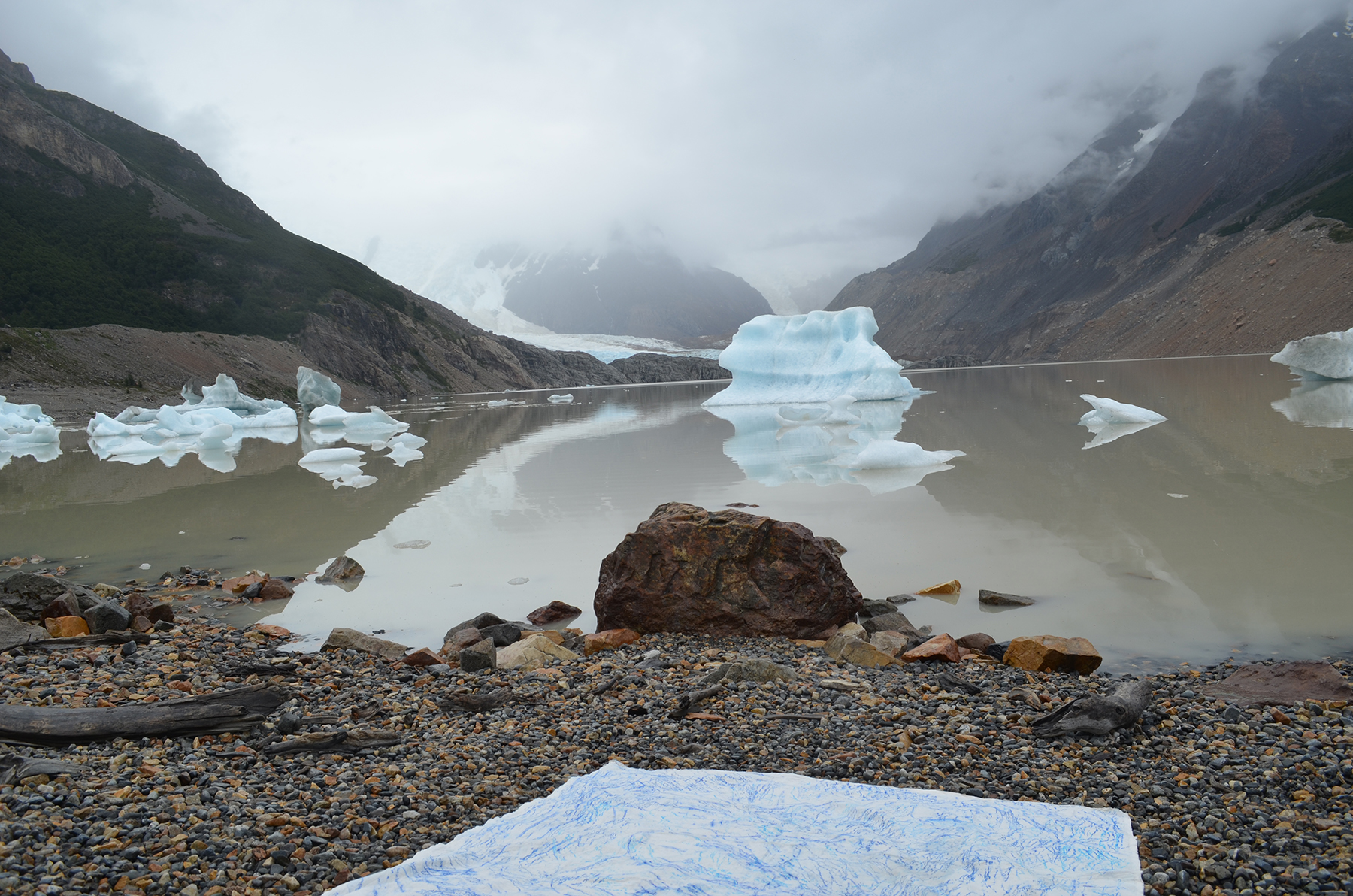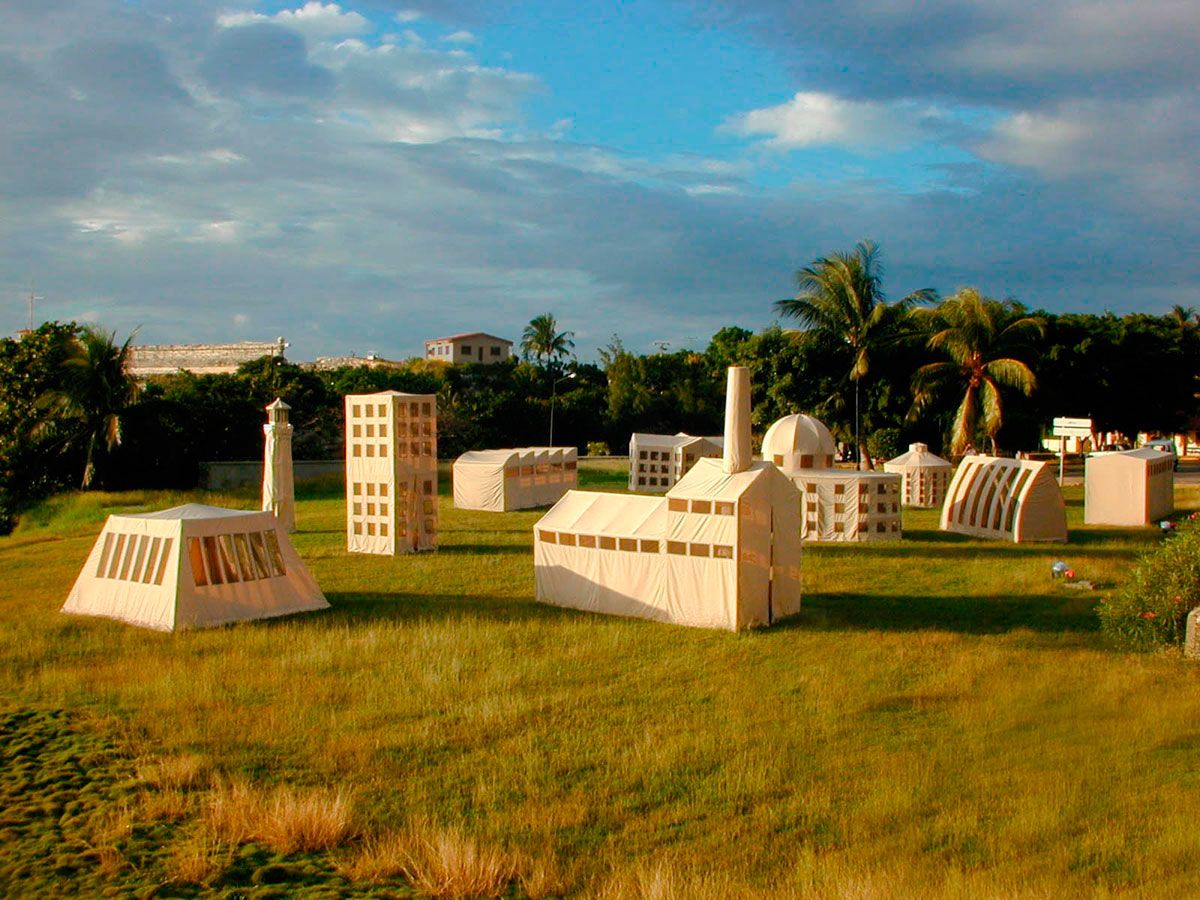Each project I carry out as an artist, teacher, or cultural manager comes from concerns and interests that cross me. Therefore, I seek to link everything I do to the relationship between art, nature, and humanity. From this, research, exploration, and inquiry processes arise, which result in ways of producing, teaching, and managing from these perspectives.
Art and Education as Symbiotic Events
04/17/2024
Nahuel Sánchez Tolosa (Southern Patagonia, Argentina, 1988) is a visual artist, teacher, and cultural manager. His artistic work is based on his interest in the landscape, in dialogue and tension with the body as a vector of experience, reflecting on the relationship between art, nature, and humanity.
In 2020, he founded Laboratorio Intermitente, a space for contemporary research-based artistic practices and production formats, bringing together diverse actors from Latin America and beyond from a collective and educational perspective. Nahuel is currently a teaching artist-in-residence at the Travesías Terremoto program, selected through LA ESCUELA___’s open call.

Laboratorio Intermitente - "Disorientations of drawing" project.
Courtesy: Nahuel Sánchez Tolosa.
Education
Training
I believe there is an artistic side in everyone, the difference lies in those who choose to work on that aspect of their lives. In my case, I did my high school studies in the city of Rio Gallegos, Province of Santa Cruz, in Southern Patagonia, Argentina, at the Centro Polivalente de Arte N° 1—a school oriented towards arts, communication, and design.
Later, I moved from Patagonia to Córdoba, where I entered the university and studied Visual Arts, Design, and Social Communication. During those years, I had the opportunity to do an exchange program at the Universidade Federal do Paraná, in Curitiba, Brazil, where I studied photography, art history, and engraving, among other things. Recently, I finished a master's degree in Art Education with a major in Visual Arts at the Universidad Nacional de Rosario.
I find education to be a fundamental and inherent aspect of being an artist. This undoubtedly enhances and expands our ability to develop other ways of seeing and thinking about the world.
Teaching
I believe teaching should work as a liberating and reciprocating act with other people, where teaching and learning flow in both directions. Throughout my career and training as an educator, specifically in the teaching of visual arts, I have worked with various human groups: children, teenagers, and adults at different educational levels. Each experience has been singular, allowing me to develop flexibility and adaptability, not only to different ages and profiles but also to understand the artistic educational work within the framework of diversity.
Educational practices are fundamental for thinking and carrying out artistic practices, as they allow adding historical and contextual meaning to the field of artistic knowledge and establishing relations with other areas that have contributed to its development. In addition, the teaching and learning processes contribute to technical rigor and sensitivity in art making.
I don’t think artistic practices can be thought of separately from educational practices; I consider that both nourish and feed each other constantly.
From my experience, education emerges as an artistic practice in itself, where the senses, relations, and sensitive exchanges that affect the subjects participating in the teaching and learning processes are conveyed. Education is an artistic event and artistic events are collective and shared processes.
Learning
Many proposals and projects are now generating teaching and learning processes for communities. Particularly, in recent times, I have developed a working relationship and artistic friendship with Proyecto Visitantes, formed by Gabriela Hernández and Álvaro Martín in the Argentine Patagonia. They have been building a project that energizes and mixes territorial, exchange, and educational artistic practices from a collective approach. This way of thinking and living the contemporary artistic practice has been an example of amity and affection on how we can work and produce art, from a critical and situated perspective.
Of course, institutions in the artistic field have contributed to my training and experience. However, establishing relationships and exchanges with other areas of knowledge and projects linked to society has also been fundamental.
I’m interested in thinking about the theoretical pairings of art/life and art/education because I find them to work inseparably. For this reason, Ana Mae Barbosa’s proposals and works regarding art education are essential for anyone who decides to work in the artistic field.

ISA- Exercise on drawing and territory at the University of the Arts in Havana.
Courtesy: Nahuel Sánchez Tolosa.
Processes
Beginnings
Questions
To err is human. So, back to the art/education pairing, I believe it’s fundamental to embrace doubts and mistakes as part of the creative process that often play a determining role in the outcome. At the same time, intuition must be attended to in a constant exercise of listening and reflection on the sensations that might appear spontaneously, which often shift the path of what we are creating. We must also embrace the contingencies that may emerge along the way; we can integrate them as part of the work to add complexity to its development.
Over time, my processes have acquired different nuances. But I don’t believe it could ever be something static and hermetic, because as time goes by and the world changes its ways of presenting itself to us, our processes and subjectivity will inevitably mutate as well and take on other modalities. Working with others and taking charge of this shared process as a vector of mobility and learning sensitizes us even more, enriching and nurturing everything we do.
Strategies
My work processes generally follow a consistent methodology. Firstly, I write down all the ideas, concerns, or information that come up in my daily life in a log. Secondly, I enter a state of exploration and research where reading and searching for background, materials, supports, and tools is key. Thirdly, the production and making phase begins, when I make tests and sketches until I reach what I projected. Finally, in the fourth stage, I try to write about what I have done and achieved. For me, writing is fundamental, as it constitutes the memory of our work and the tangible evidence of what we have done. It is, in my opinion, the development of a porous methodological narrative that guides our artistic work throughout our lives.

Presentation of KUAN Ecotone and graphic experiments at ISA - Havana, Cuba.
Courtesy: Nahuel Sánchez Tolosa.
Procedures
Generally, I take on reading various books that I gradually collect in my artistic library. I also use digital repositories and art websites to read papers and writings on topics of interest. My work is currently crossed by different media, most of which result in the construction of installations. However, the landscape and its relationship with the body is the theme that questions my production and research at large.
Therefore, I work a lot in different natural territories, using walks and drifts, collection and register as procedures to develop in situ actions that generate site-specific and immersive experiences. I also use technological resources such as cameras, recorders, and various grapho-plastic elements.
Dialogues
Most of my projects involve other people at some point in their development. It is essential for me to share my sensitive processes with colleagues. On many occasions, some of the ideas that arise require specific knowledge that falls outside my field of training; therefore, I frequently resort to other people for assessment or to undertake new learning processes. Also, in some cases, other professionals collaborate with me to finish the pieces or processes that will be part of the work. I think it’s key to highlight the group processes that arise in educational and artistic practices, especially in a world that often tends to the development of individuality, ignoring that we are social beings and that we need otherness to go through this world.

Laboratorio Intermitente - Discussion group as part of the Ecotones Workshop at the University of the Arts in Havana.
Courtesy: Nahuel Sánchez Tolosa.
Works & Projects
In Progress
I’m currently working on various processes related to the tensions between human action and the environment, particularly regarding the relationship with geology, other species, vegetation, and the landscape. I’m interested in elucidating and reflecting on the consequences of our passing through planet Earth from a Latin American perspective.
In parallel, from Laboratorio Intermitente—a space for contemporary artistic practices—I coordinate several collective projects spanning production, research, exhibition, and publishing. These art projects explore environmental, educational, gender, and other decolonial perspectives from the global South, developed through cooperative work from inside and outside Argentina. Some of the main themes we address include education and contemporary art for children, the landscape and the environment, mail art, writing, expanded drawing, and performance.
In Retrospect
One project that presented a significant learning experience for me was a working process I shared with other artists in Havana, Cuba. After a long period of remote work adapted to the conditions of each country, I had the opportunity to travel to Cuba to carry out a series of actions at ISA – University of the Arts in Havana. This trip was possible thanks to the Argentina Cultura al Mundo program of the Argentine Ministry of Foreign Affairs.
At ISA, I met colleagues and friends with whom we had shared a process of collective production and I understood how each territory distinctly marks and defines our work. I also learned that geographical and geopolitical borders are cultural constructions that we must transcend in order to think about artistic and educational practices from a nomad perspective. This approach expands our thinking and sensitivity, amplifying our frame of reference, and maximizing the Latin American artistic repertoire.
Contexts
The context is key to the development of my artistic practices and the devising and unfolding of projects. Firstly, I believe this has to do with the fact that the context defines the material possibilities we have to produce our work. Then, there are the imaginaries, customs, and contextual identity itself that symbolically attach different meanings and singularities to what we do. The geographical territory is key in my work, as it is my main vector of interest and thought; most of the time, it becomes a resource area to work, as well as the very support where I carry out my artistic practices.
On the other hand, in the projects that I coordinate from the cultural management of Laboratorio Intermitente, the geographical, social, political, and cultural aspects that arise outline the work’s objectives and purposes, to be analyzed and thought collectively. Context also allows projecting, at a later stage, possible artistic interpretations, reflections, or solutions for the places we inhabit.

Cápsula Intermitente - lSA - Havana, Cuba.
Courtesy: Nahuel Sánchez Tolosa.

Cápsula Intermitente - lSA - Havana, Cuba.
Courtesy: Nahuel Sánchez Tolosa.

ISA- Exercise on drawing and territory at the University of the Arts in Havana.
Courtesy: Nahuel Sánchez Tolosa.

ISA- Exercise on drawing and territory at the University of the Arts in Havana.
Courtesy: Nahuel Sánchez Tolosa.
Reflections
We are currently on the verge of profound changes in our planet at the environmental, cultural, political, and economic levels, which we will experience from the places we inhabit. In view of this, I think it’s fundamental to think of artistic and educational practices as symbiotic events. This means understanding that art is education and that education is art. And in the bonding processes that arise within these pairings, joining together and working collectively is necessary for a more affectionate, caring, and friendly world among humans, with other species, and with our environment.
Assuming an active role as artists is part of our responsibility, to contribute to the construction of specific, situated, sensitive knowledge that serves as scaffolding in the development of future societies. Finally, it is necessary and imperative to strengthen and expand collaborative work networks across Latin America, which are able to convey our history and our natural, ancestral, and cultural richness to imagine a more democratic world.

